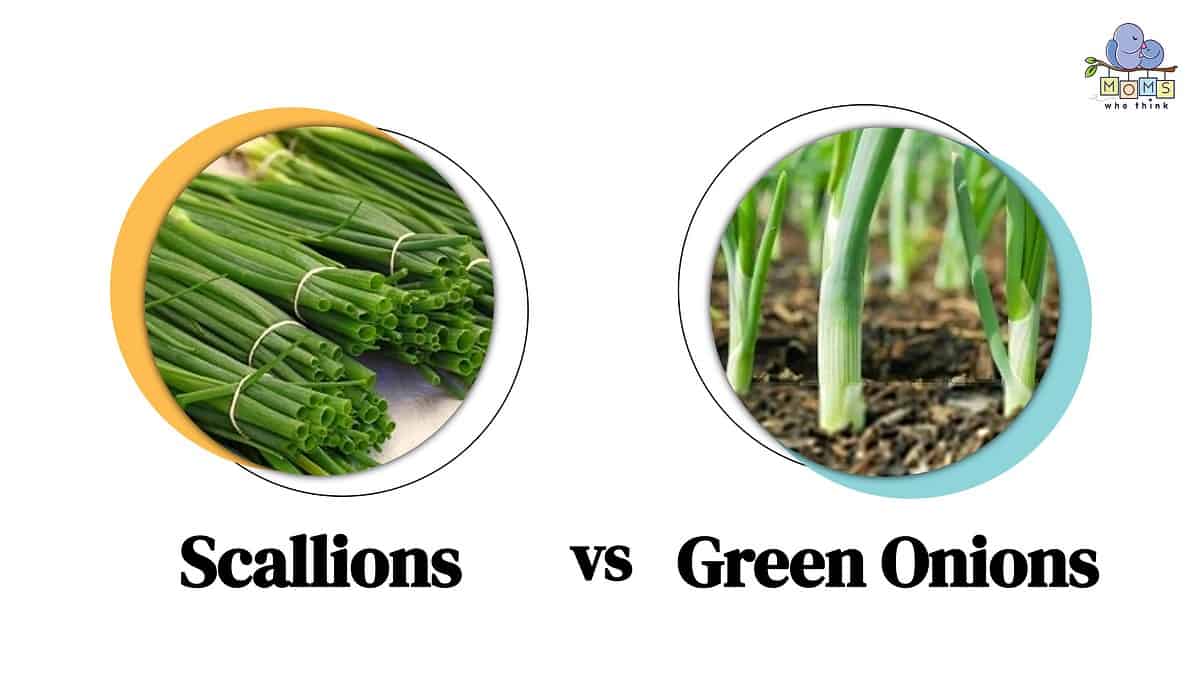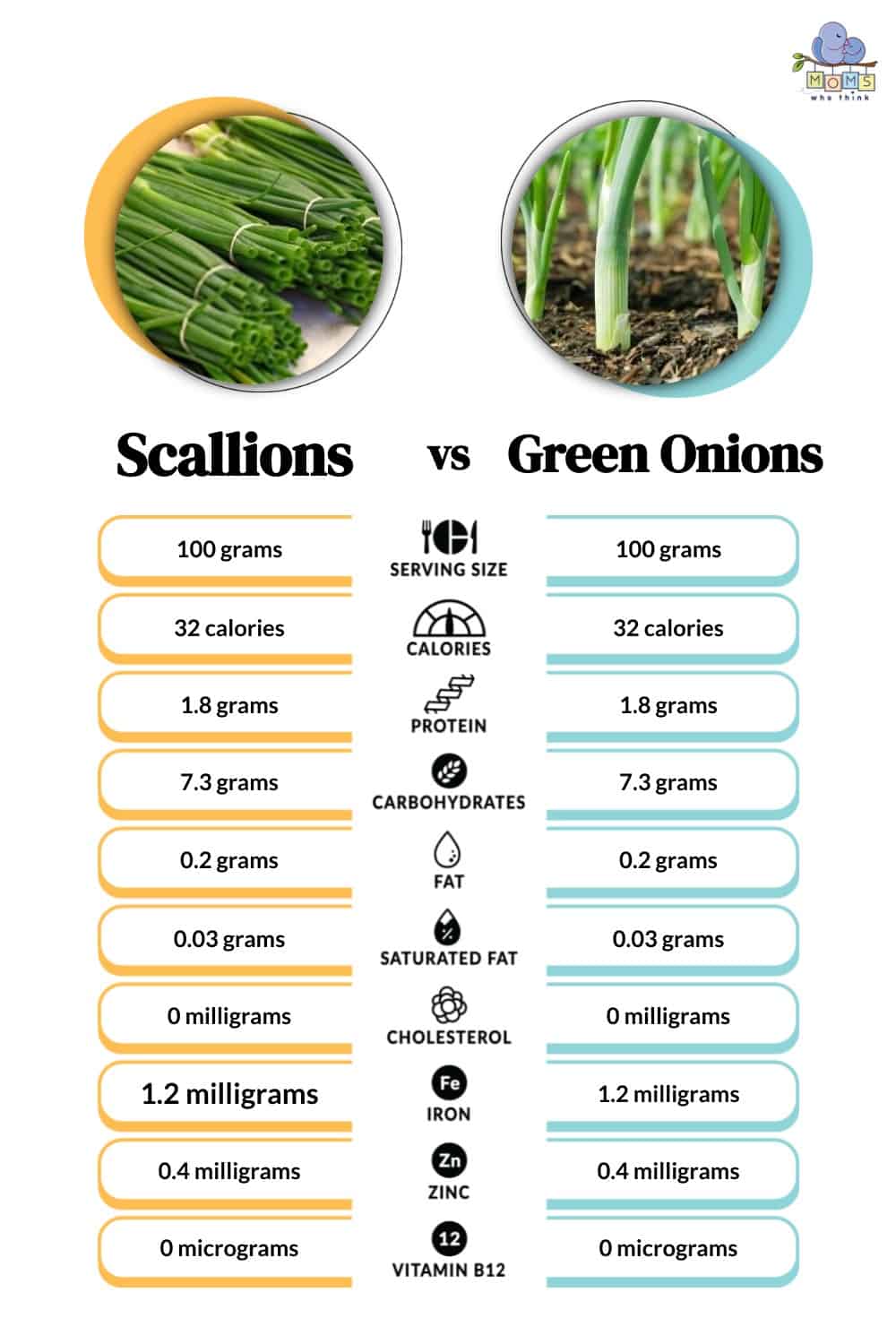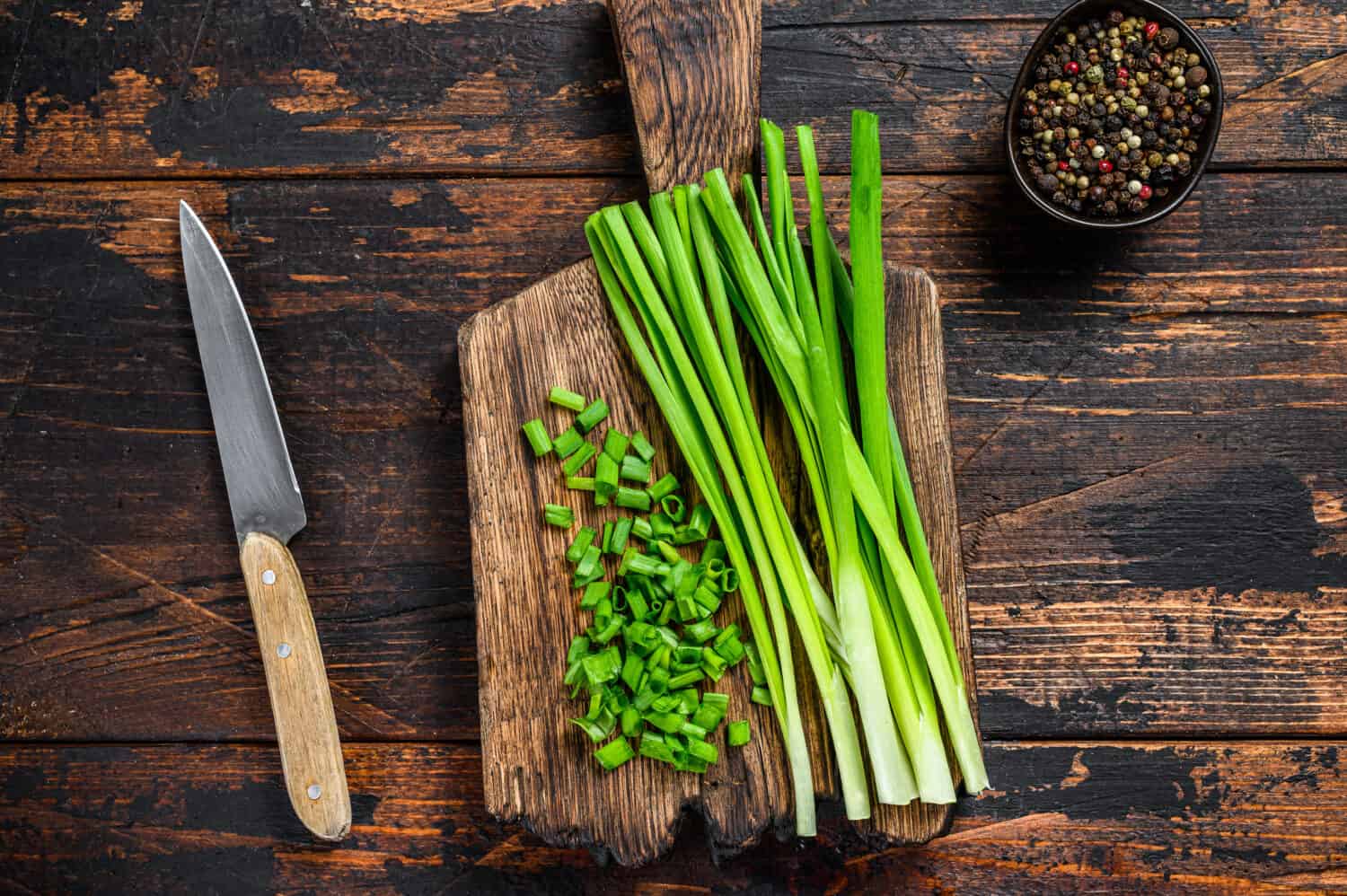Scallion vs. green onion: What is the difference? Very little, as it turns out. Both scallions and green onions belong to the Allium fistulosum genus, a perennial plant species. They have long, slender green leaves and tiny, white stalks. Both scallions and green onions have stringy white roots and grow in bunches. These onions are milder in flavor than regular bulb onions, making them a favorite for garnishes, salads, and other dishes.
However, some recipes may specify one rather than the other because there is the slightest difference between the two. To better understand, let us examine what scallions and green onions are, their nutritional values, and their best recipes.

Scallion vs. Green Onion: What do these terms mean?
Scallions and green onions have the same taste and texture. The only difference between them is their age when they are harvested. Green onions are harvested when the plant is young and has not developed a bulb. The early harvest results in a milder flavor. The plant develops a small white bulb at its base when it grows further. At this stage, it is often called a scallion. Scallions may have a slightly stronger flavor, but there is typically very little difference between the two.
Some recipes may call for scallions, others may call for green onions. The term chosen usually depends on the region. For instance, the term green onions is more common in the United Kingdom and Australia. In the United States, scallion typically refers to the entire plant, meaning that the white part and the green leaves can both be used. So, depending on the recipe's origin, you may come across one or the other. However, since green onion is basically a scallion, you could substitute it for a scallion. It does not change the taste of the recipe.
Scallion vs. Green Onion: Nutritional Information
Since they are essentially the same thing, the nutritional values of scallions and green onions are identical. Most people eat scallions and green onions in small amounts because they are typically used as garnishes or to add flavor to a dish. However, even in small amounts, both have some health benefits. They are low in calories and high in nutrients. Both foods contain fiber and antioxidants.
Below is a chart highlighting their nutritional values.

Scallion vs. Green Onion: How to use them
Scallions and green onions are interchangeable in recipes. They are versatile ingredients that add a mild onion flavor and a slightly crunchy texture to dishes. When buying them at the grocery store, look for ones with firm stems and brightly colored leaves. Avoid them if they look slimy or wilted.
You can eat the entire green onion or scallion with only the very end of the root removed. The best way to cut scallions and green onions is to place them in a single layer on the cutting board and then use a sharp knife to cut them up. Make the slices thicker or thinner, depending on your preference.
You can store green onions for up to two days. However, wrap them up; otherwise, they will lose their crunchy texture.
Scallion vs. Green Onion: Using them in cooking
Scallions and green onions are incredibly versatile vegetables. Here are some common uses.
- Baking – Sprinkle them on top of baked potatoes, casseroles, or cheesy dishes to add flavor and color.
- Garnishes – Use chopped scallions or green onions as garnishes for soups, stews, and grilled or roasted vegetables.
- Grilling – You can grill with whole or cut-up scallions and green onions. Serve as a side dish after brushing them with a bit of oil and seasoning them with salt and pepper. Grill until they are slightly charred and tender.
- Marinades – Combine chopped green onions or scallions with soy sauce, ginger, garlic, or oil to create a delicious marinade.
- Stir-Frying – Both are common stir-fry ingredients. Cut them into two-inch pieces and toss them in toward the end of cooking to add flavor.
- Soups and Broths – Often used as the base for soups and broths, especially in Asian cuisine, they are added as flavor during cooking or sprinkled on top as a garnish.
In addition to these ideas, both commonly appear in noodle dishes like lo mein or ramen. Additionally, they are both popular in egg-based dishes like omelets and quiches.
Scallion vs. Green Onion: Recipe ideas
Now that we know all about them, it is time to start cooking. Here are some great recipe ideas for your next batch of scallions or green onions.
- 20-Minute Scallion Noodles
- Baked Potato Soup With Bacon, Green Onion & Cheddar
- Cheese Biscuits
- Chicken Yakitori
- Fried Rice with Scallions, Edamame, and Tofu
- Ginger Scallion Ramen Noodles
- Green Onion and Cornbread Stuffing
- Green Onion Ranch Dip
- Green Onion Pancakes
- Japanese-Inspired Cucumber Salad
As you can tell from the variety of these recipes, scallions and green onions are a great, versatile food in the kitchen.
In Summary
Scallions and green onions are the same versatile vegetable. They appear slender, vibrant green with stringy white roots. Their mild taste adds a subtle flavor and texture to many dishes, everything from salads to stir-fries. Though typically eaten in small amounts, they have some nutritional value. Both are low-calorie foods with nutrients like fiber and antioxidants. Whether used as a garnish or an essential ingredient, scallions and green onions are a yummy addition to a wide variety of dishes.
The image featured at the top of this post is ©Mironov Vladimir/Shutterstock.com.

